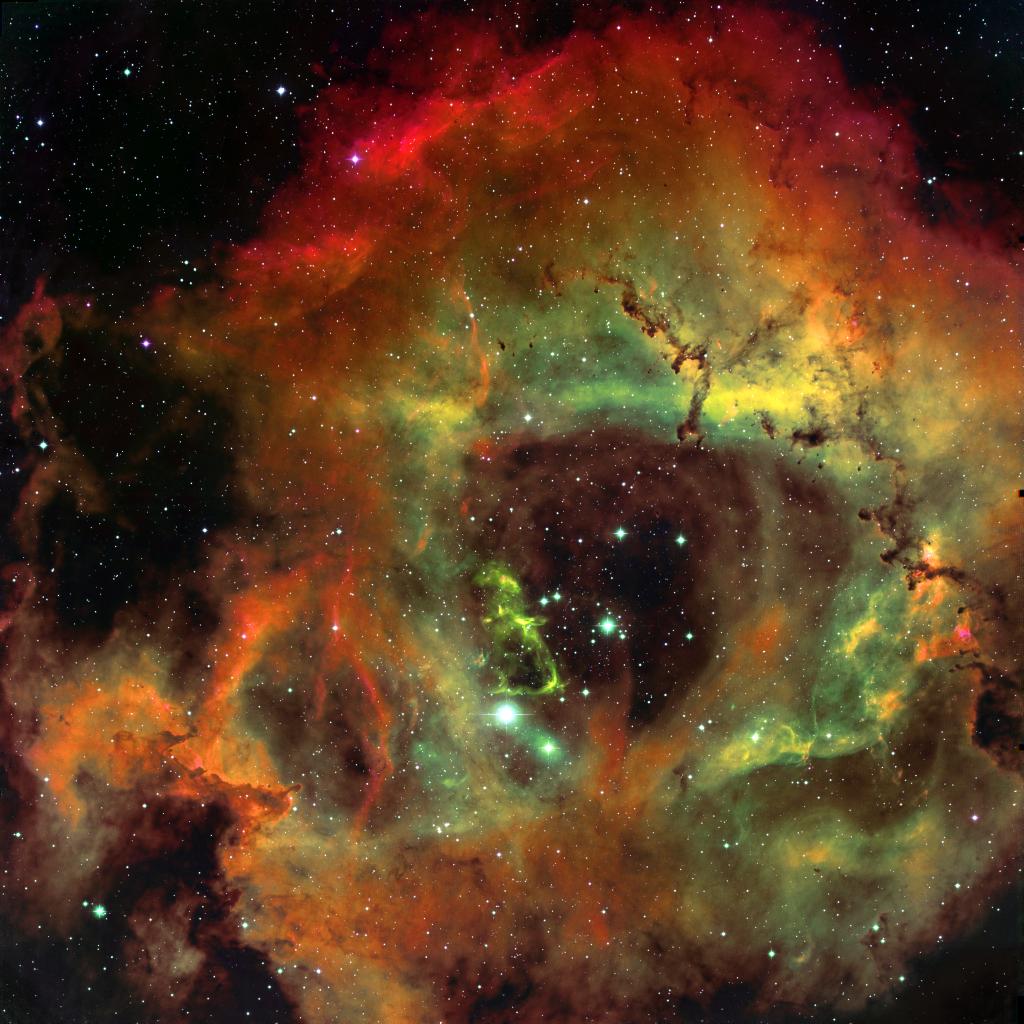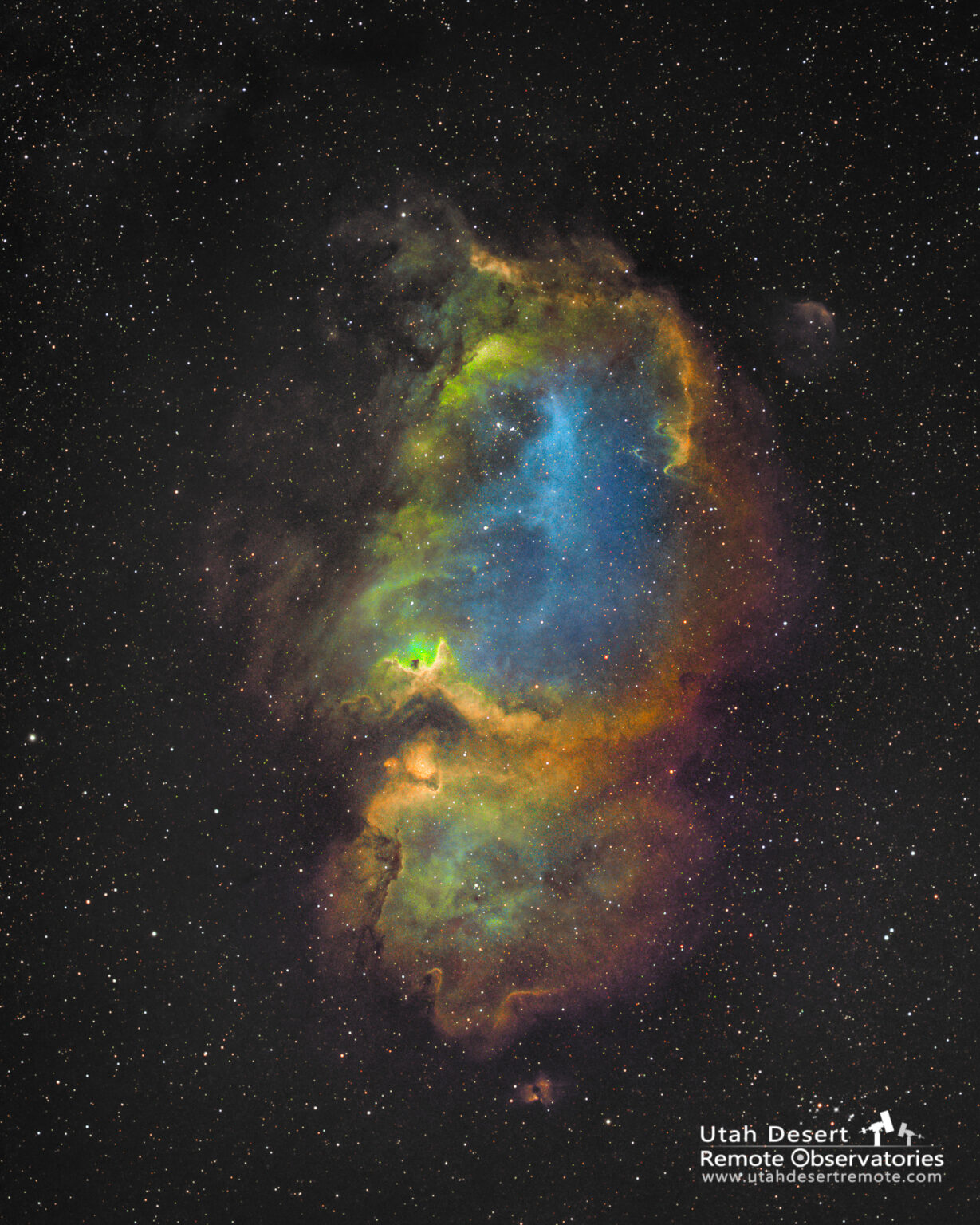AVAO wrote: ↑Mon Feb 06, 2023 12:02 pm
It really has that much oxygen (blue) here?
What's the source of this huge oxygen production?
APOD 2023 February 6

"The featured image ... using multiple exposures and very specific colors of Sulfur (shaded red), Hydrogen (green), and Oxygen (blue),.."
Image Credit & Copyright: Lyman Insley
APOD 2000 January 11

"Here green light originating from oxygen and blue light originating from sulfur supplements the red from hydrogen."
Credit: T. A. Rector, B. Wolpa, M. Hanna (AURA/NOAO/NSF)
APOD 2004 March 25

"In this image, sulfur is red, hydrogen is green, and oxygen is blue, a color scheme used in images of other astronomical nebulae as well."
Credit & Copyright: Russell Croman

"The Soul Nebula rendered in the Hubble color palette where sulfur, hydrogen and oxygen are color mapped to red, green and blue,..."
https://utahdesertremote.com/a-tale-of-two-color-palettes/
Today's APOD is a mapped color image. While the APOD shows us structures in the Rosette Nebula that are really there, it would be a big mistake to use a mapped color image to try to judge how much oxygen, hydrogen, sulfur or other elements that a specific nebula contains. The fact that we see a lot of blue stuff in the center of the Rosette Nebula does not mean that this part of the Rosette is completely dominated by oxygen. It means, simply, that an OIII filter (that detects ionized oxygen at 501 nm) has been used on the Rosette Nebula, and wherever oxygen was detected in at least reasonable amounts, the final picture was processed in such a way that "some oxygen" was displayed as "almost all oxygen" and shown as blue.
We have no particular reason to believe that the Rosette Nebula is extremely oxygen-rich.
What does the Rosette Nebula
really look like? There are many ways to answer that question, but I like this picture from ESO:
In the ESO/S. Brunier image, you can see that the Rosette Nebula is really faint. It is much fainter than the star cluster that is inside it, NGC 2244, and that is why we see the stars so much clearer than we see the nebula. This is also what it would be like if we observed the Rosette Nebula through a telescope: We would see the stars, but we might not actually see the nebula. And if we did, it would look very faint and round.
One thing is "wrong" with the ESO/S. Brunier image: It shows us the Rosette Nebula as a dull pink object. In reality, we wouldn't see any color in the Rosette Nebula at all.
As a Color Commentator, I have a problem with mapped color images, because the colors in such images don't tell me what I want to know about the objects in question. And quite often, I find the mapped color images aesthetically disappointing.
Bur as to how different photographers have portrayed the Rosette Nebula, I suggest you take a look at
this gallery of Rosette Nebula images. Which of all these images shows us the Rosette Nebula as it "really" is?
Well, I still think that the ESO/S Brunier image may be "truer" than any of the images in the gallery, simply because it really brings out the faintness of the nebula. But if you ask me about the images in the gallery, and if you want a "true color image" of the Rosette, you should pick one where the central stars are a very pale shade of blue-white and the surrounding nebula is a very pale shade of pink close to the stars, and much redder farther away from the bright center. One of the first pictures in the gallery, the one by Jean M Dean, is doing a fairly good job at showing these colors to us. Note that the parts of the Rosette that are so glaringly blue in the APOD are grayish-white with a hint of blue in Jean M Dean's image.
The grayish-white color of the inner part of the Rosette Nebula in Jean M Dean's image is a combination of blue-green OIII emission and red hydrogen alpha emission.
So yes, there really is oxygen emission in this part of the Rosette Nebula. Just not in crazy amounts.
Finally, if you want to see a nebula that glows really bright in oxygen emission, you should pick a planetary nebula. Not all planetaries are strongly dominated by oxygen, but some are, and these are the remnants of medium-mass stars that have lost all of their hydrogen during their evolution. Now their cores are blisteringly hot, and the vicinity around the cores is not empty but extremely rarefied, which is perfect for oxygen emission. An example of what these planetaries may look like is this portrait by Adam Block of IC 1295:
Oxygen-rich planetary nebula IC 1295.
Credit: Adam Block.
Ann
 In the Heart of the Rosette Nebula
In the Heart of the Rosette Nebula







